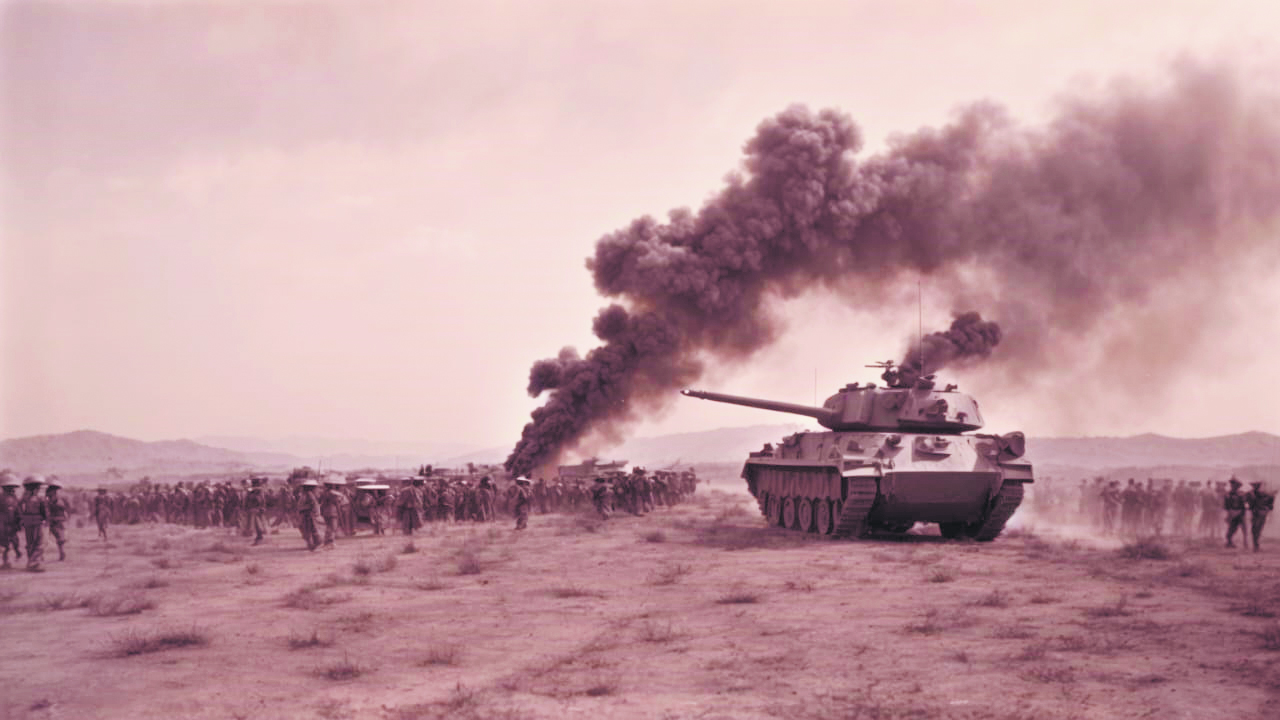In the rugged terrain of the Pir Panjal Range, nestled along the Line of Control (LoC) between India and Pakistan, lies the strategic peak of Haji Pir. This seemingly insignificant piece of land would become the focal point of a fierce battle during the 1965 Indo-Pakistani War, leaving an enduring mark on the military history of both nations. The Battle of Haji Pir would test the resolve, courage, and tactical prowess of the soldiers involved, shaping the outcome of the conflict and leaving a lasting legacy.
The origins of the conflict over Haji Pir can be traced back to the partition of British India in 1947, which led to the creation of India and Pakistan. As tensions simmered between the two nations, the Kashmir region emerged as a flashpoint, with both sides vying for control over the disputed territory. Haji Pir, strategically located overlooking the Uri sector in Indian-administered Jammu and Kashmir, held immense significance due to its commanding position and proximity to vital lines of communication.
In August 1965, as hostilities escalated between India and Pakistan, the Pakistan Army launched Operation Gibraltar, a clandestine mission aimed at inciting insurgency in Indian-administered Kashmir. As part of this operation, Pakistani troops infiltrated across the Line of Control and occupied Haji Pir, establishing a stronghold from which to launch attacks on Indian positions.
The Indian Army, however, was quick to respond. In September 1965, Indian forces launched Operation Grand Slam, a counteroffensive aimed at recapturing Haji Pir and pushing back Pakistani troops. What ensued was a grueling battle marked by fierce combat, treacherous terrain, and relentless artillery barrages.
For weeks, Indian and Pakistani soldiers engaged in intense fighting for control of Haji Pir, with neither side willing to concede ground. The rugged mountain terrain made movement difficult, and both armies suffered heavy casualties as they fought for every inch of territory. Amidst the chaos and carnage, acts of extraordinary bravery and selflessness emerged on both sides, as soldiers displayed unwavering courage in the face of adversity.
Despite facing stiff resistance, Indian forces ultimately succeeded in wresting control of Haji Pir from Pakistani troops. The recapture of the strategic peak was hailed as a significant victory for India, bolstering morale and underscoring the determination of its armed forces.However, the Battle of Haji Pir would not be the final chapter in the conflict. The Indo-Pakistani War of 1965 would continue for several more weeks, culminating in a ceasefire brokered by the international community. While the war did not result in a decisive victory for either side, the Battle of Haji Pir remains etched in the memories of those who fought and sacrificed on its rocky slopes.
The legacy of the Battle of Haji Pir endures to this day, serving as a reminder of the high cost of conflict and the bravery of those who serve in uniform. The strategic significance of Haji Pir and its role in shaping the outcome of the 1965 war underscore the importance of territorial integrity and national security in the volatile region of Jammu and Kashmir.As India and Pakistan continue to grapple with unresolved disputes and simmering tensions, the lessons of the Battle of Haji Pir remain as relevant as ever. It serves as a sobering reminder of the consequences of war and the imperative of seeking peaceful resolutions to longstanding conflicts.










